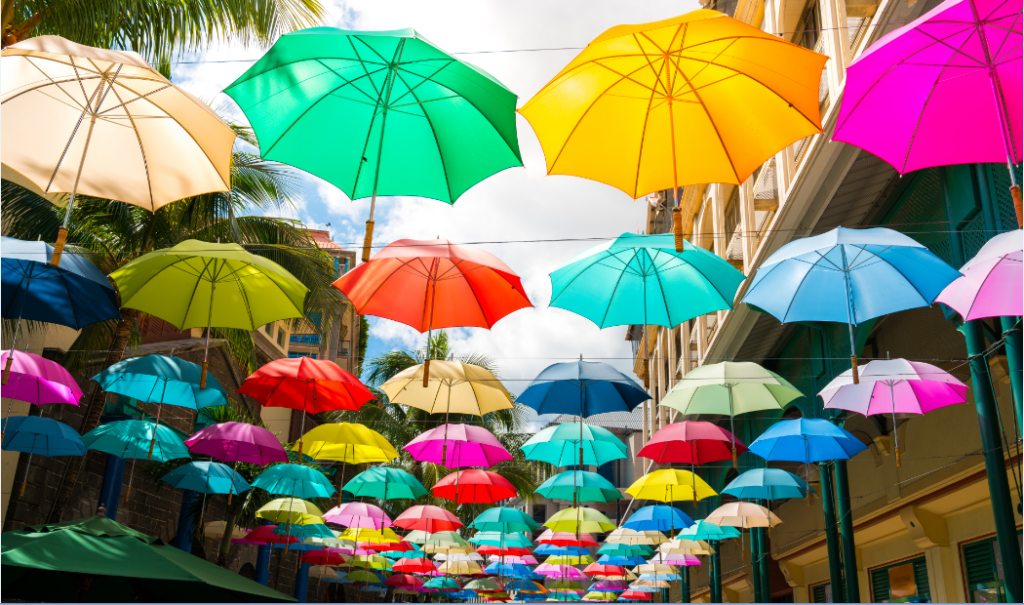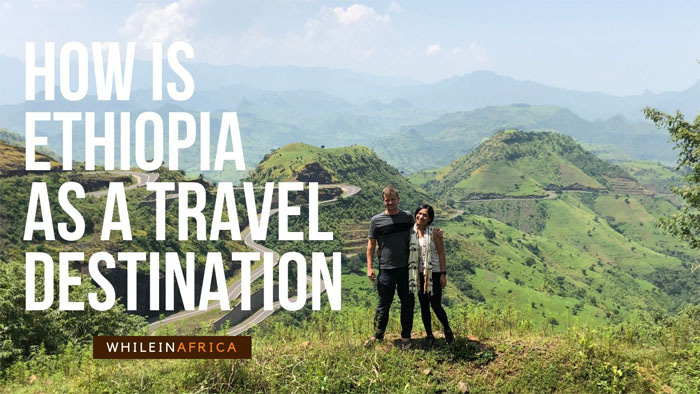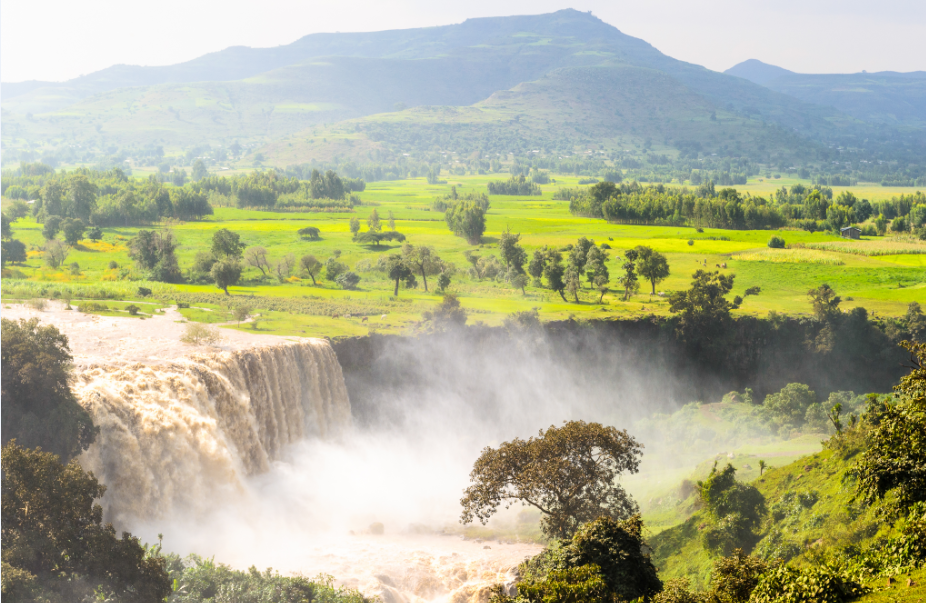In January 2019, the British Backpacker Society ranked a visit to the Danakil Depression as the world’s #1 adventure travel experience. Here, one of the Co-Founders of the society, Samuel Joynson, shares the story of his first trip to northern Ethiopia and the Danakil region…
By British Backpackers Society
From the moment that my flight touched-down in Axum, I knew that this trip would be different. From the landing strip of Emperor Yohannes IV Airport, I watched in awe as the undulating hills of northern Ethiopia jutted out of the dusty plains of north-east Africa, and realised that this promised to be a world-class adventure travel experience.
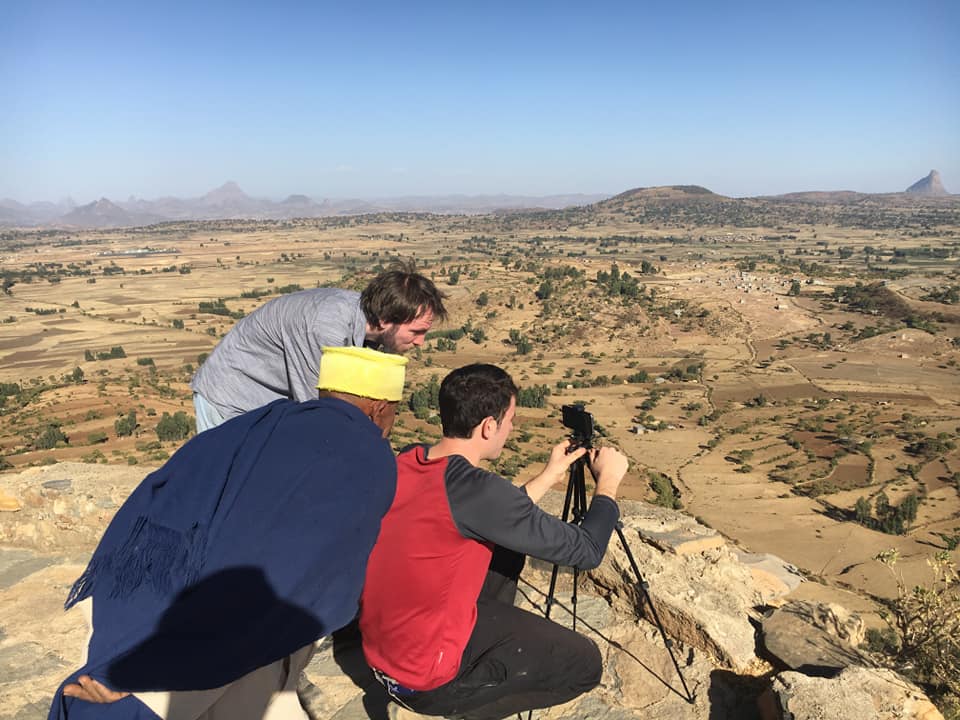
On paper, the trip plan was simple. From Axum, I, with my two fellow Co-Founders of the British Backpacker Society, would head 800km eastwards to Ethiopia’s border-crossing with Djibouti at Galafi, but, as is always the case with adventure, I knew that plenty of stories would await en-route!
The trip started as planned, with a memorable visit to the unique Debre Damo Monastery. Perched atop a table-top cliff, Debre Damo Monastery demands its visitors to tie themselves to a rope, and scale the side of a 5m rock-wall that has guarded it from intruders for generations. With a slight fear of heights, the climb to Debre Damo sparked a slight quiver of trepidation amongst my normally steely resolve, but, as I reached the crest of the cliff, the warm smile of a local monk that greeted me immediately ensured that the exertion felt well-spent. The monastery itself was remarkable, with beautiful paintings decorating the ancient interior, but, as is so often the case in adventure travel, it was the journey to this beauty that will stick longest in my memory.
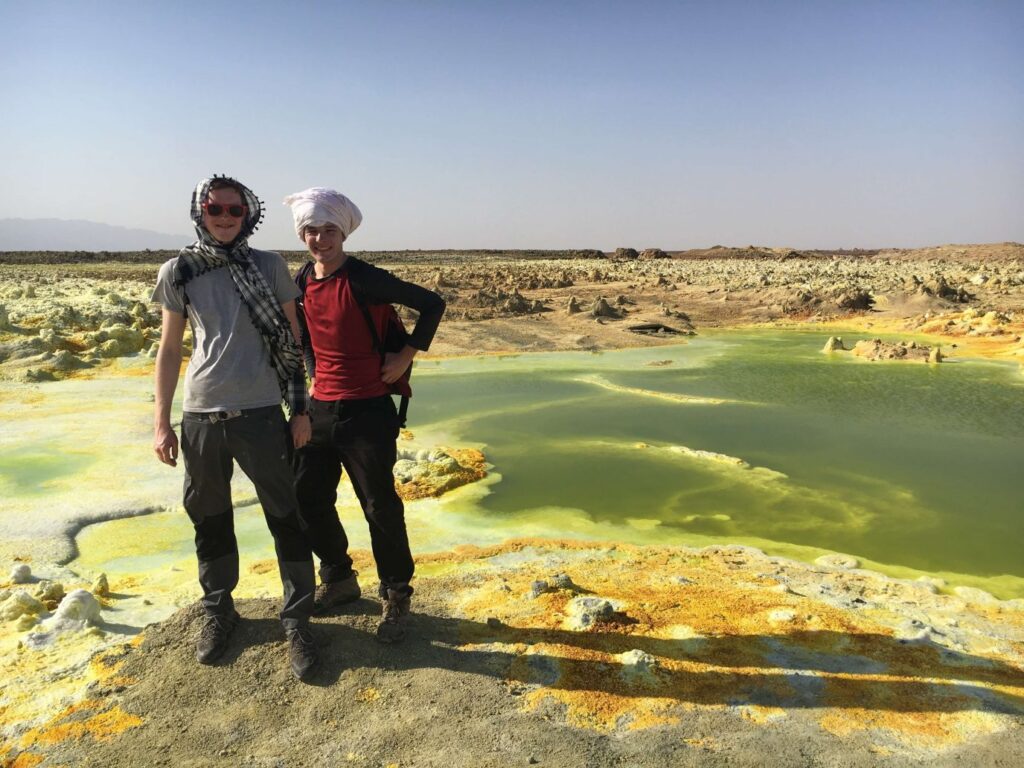
After I winched myself back down Debre-Damo’s cliff-face, I travelled east through Ethiopia’s hilly Tigray region to Wukro, a launching-point for one of the world’s most epic adventures. The town of Wukro lies on the cusp of the Danakil Depression, one of the hottest – and lowest – locations on the planet, and the plan was to drive directly through the middle of it. I stocked up on food and water (and, critically, bought a new pair of sun-glasses!), and set off in a convoy of travellers into the desert.
The Danakil Depression felt like another world. As I got closer to the desert’s heart, the hills of Tigray disappeared, and were replaced with a landscape so harsh, so dusty, so hot that it was beyond belief that anyone could live there. However, as the 4×4 rumbled into Hamedele, my home for the night, I was soon introduced to the Afar people, who, with a kind smile and an enthusiastic handshake, welcomed me to their home.
From Hamedele, I travelled deeper into the desert to witness some of the world’s most unique geological sights. Take, for instance, Dallol – a multi-coloured cacophony of geological fervour, where liquids inexplicably bubble and burp under the brutal Horn of Africa sun. At first sight, Dallol looks like a scene from the most psychedelic of dreams, but, as my eyes adjusted to the sight under the blazing sun, it became apparent that this place was no dream, but just a fundamental challenge to my understanding of what was our world. There are few places more ironic – given the temperatures – to send a “shiver” down one’s spine, but, anyone who has been to Dallol will know how this can happen – the sight is simply breathtaking.
Dallol, however, is not the only geological marvel hiding in the Danakil. Alongside salt-lakes and camel-caravans, I also discovered the Erta Ale volcano, a geological phenomena that gives travellers a view into the fiery centre of the earth. With the help of a guide, I climbed the volcano in the dead of night, both to mitigate the challenges posed by the Danakil’s heat, and to maximise the spectacle of Erta Ale’s glow. The climb was challenging (particularly with the volcano’s sulphur in the air!), but, as I pulled myself to the crater’s rim, I knew, for the second time in as many days, that I was enjoying the privilege of seeing a truly unique natural sight.
As I left the Danakil for Semera, a town that served as the launching point for transport options to Djibouti, I recognised that the Danakil Depression was everything that I had hoped for (and more). It was a once in a lifetime experience that, despite not being easy (my car got stuck in the sand on a number of occasions!) or particularly comfortable (sunburn was certainly an issue!), was perhaps the world’s most exciting adventure travel destination. I couldn’t wait to tell my friends and family back home, and share some of the most otherworldly photos that I had ever taken!
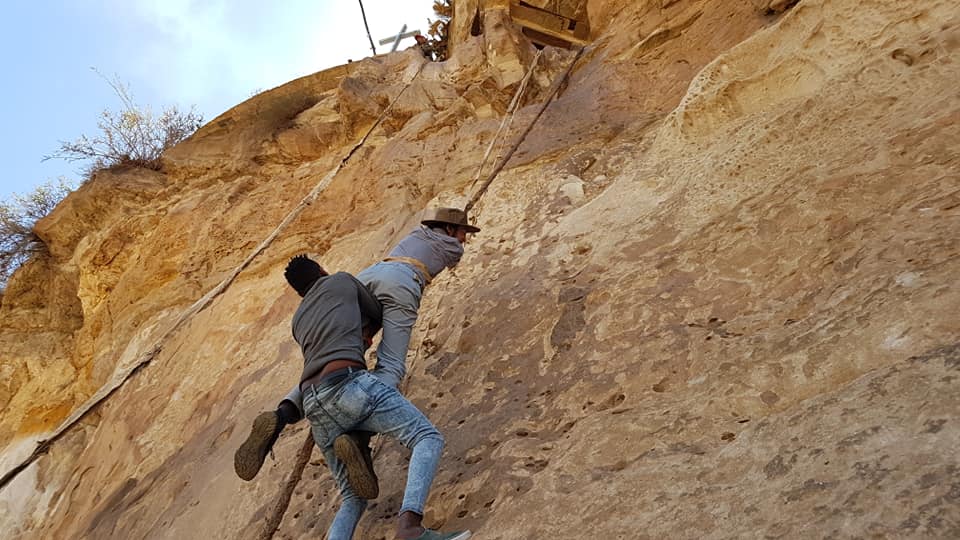
After a hot-shower and a good night’s sleep in Semera, it was time to head towards the Djiboutian-border at Galafi, a trip of about 3 hours. Given that few tourists leave Ethiopia at Galafi, finding a suitable bus initially proved to be difficult, but, in a manner that surmised my experience in Ethiopia over the previous couple of weeks, the kindness of the Ethiopian people provided a solution. A trucker heading to Djibouti City spotted that my group was looking slightly confused on the side of the road and without a lift, and, with a big grin on his face, stopped and welcomed us aboard his truck. “Djibouti?” he asked, to which we enthusiastically agreed with. “No problem! But, more importantly, what do you think of Manchester United’s chances this season – I hate Jose Mouriniho!” I knew that an entertaining morning awaited!


